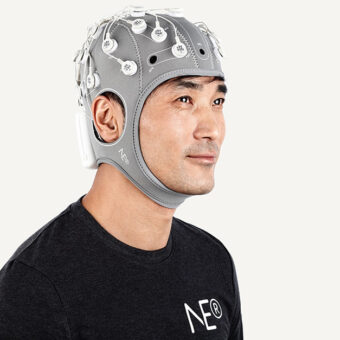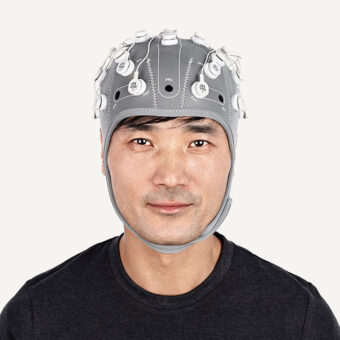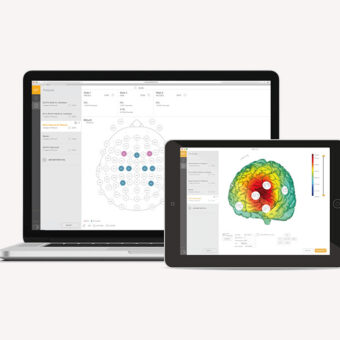As soon as the weather in the mountains dips below 0 degrees I look forward to one of my favourite time of the year…winter. In Barcelona it’s not easy to find a snow, however only 200km from the city, in the Pyrenees Mountains you can easily find white powder. With winter come the snow – and most importantly skiing, especially my favourite downhill skiing.
This time, I opted for something bit different and decided to record my EEG while skiing using Enobio, our wearable, lightweight and wireless EEG system. Our recent developments in mobile EEG technology provide an unprecedented opportunity to move EEG from the lab into real-world. Here comes Enobio with the mission to: measure brain functions during motor activity and reveal brain mechanism underlying sport performance.
We have to have in mind that real-world EEG data collection creates a number of specific requirements including portability of the equipment, ease of application and the ability to effectively handle motion artifacts. The conditions in Pyrenees were typical to winter season: -7 degrees (C), altitude more that 2100m (Grandvalira Pyrenees Mountains (Andorra)) and a lot of snow. For EEG setup and recording Enobio 8 – NE monitoring system has been used. Configured in EEG Holter mode (wireless and thus without restriction regarding movements range and type), with incorporated 3D accelerometer (important for the detection of every movement onset), using 8 Geltrodes (placed in F7, C3, PO7, F8, C4, PO8, FZ, CZ) in a NE headcap and using single reference electrode attached to right mastoid.
First, the configuration and data quality checking was performed using NIC software on Mac OS computer (via Bluototh transmission). Once Enobio was ready to acquire my brain signals the Holter mode was turned on (with a recording in a microSD card) and I was ready to go skiing. The whole set-up in these conditions took me no more than 8min, taking into account that has been performed in a ski-locker on the top of mountains.
Before going into neurosciences lets try to remind first what’s the basics physic of skiing. The skier gains speed by converting gravitational potential energy [mgy] into kinetic energy of motion [1/2mv2]. So the more a skier descends down a hill, the faster he goes. A skier following straight line going down will reach the maximum speed for the slope. However, alpine skiing consists of the use of turns to smoothly turn the ski from one direction to another to control the speed of descent. Successful motor execution related to alpine-ski involves 3 basic aspects: application of the right measure of strength, a high degree of coordination and exact timing. Additionally, the whole process must be coordinated by billions of cortical neurons, motor neurons on the spine level, and more than 600 muscles with 240 degrees of freedom! In the cortex the area of the excitation will indicate the direction of the muscular action, whereas the excitation size and the firing rate will encode the force.
In my trial, the EEG was monitored continuously while I was skiing on the slopes at an altitude of between 2300-2100 meters. The signal varied in quality depending upon my skiing activity. While stationary and moving down the signal was of very high quality. When actively alpine skiing the signal showed artifact in proportion to the degree of muscle movement, however with high quality and in the acceptable range. Moreover, new data-driven analysis approaches allow separation of signals arriving at the sensors from the brain as well as non-brain sources like neck muscles, eyes, heart, and the electrical environment. For instance, independent component analysis (ICA) and related blind source separation methods have proven effective for separating brain from non-brain activities from electrophysiological data recorded during experimental paradigms. Studies designed to measure brain activity during sport performance have, to date, been limited, with Enobio issues of equipment portability and movement artifact are not a significant impediment any more!








